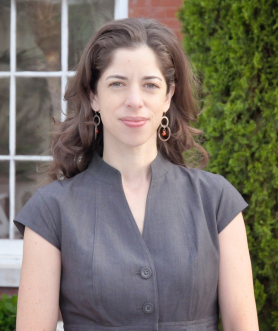By Heidi B. Miller, M.D
Dr. Heidi Miller is a primary care physician and policy advocate who has focused her career on assuring high quality, trauma-informed, equitable access to healthcare for our most vulnerable patients. She trained at Yale University and Harvard Medical School and completed her residency in Internal Medicine at Harvard’s Brigham and Women’s Hospital. She serves as a primary care doctor at Family Care Health Centers, a Federally Qualified Health Center in St. Louis. Dr. Miller is also the Medical Director for the Gateway to Better Health Program, which serves 20,000 uninsured patients via the St. Louis Regional Health Commission, an organization that has also spearheaded the Alive and Well STL initiative to reduce the community-wide impact of toxic stress and trauma.
Dr. Miller consults for the St. Louis Integrated Health Network and the Siteman Cancer Center’s Breast Cancer Partnership. She was appointed by the Missouri Governor to the Oversight Committee for Medicaid, served on the Missouri Medical Home Collaborative Steering Committee that oversaw the state-wide implementation of the Patient-Centered Medical Home model, and has been invited repeatedly to testify to the Missouri House and Senate Committees on health policies. Dr. Miller was recognized by the St. Louis Business Journal as one of its “40 Under 40” honorees.
In addressing health issues, too often we focus on individual behaviors, such as eating unhealthy food or neglecting to take prescribed medication. This can lead us to blame people for their poor health. But many individuals experience toxic stress and trauma that powerfully shape the choices they make. We need a more holistic, community-based approach to health.
In medicine, universal precautions are used as a means to ensure the safety of both our patients and staff. We wear gloves while drawing blood for all patients, regardless of which patients have contagious conditions. Medicine is not alone in this approach—all industries utilize safety measures: hard hats in construction zones and flashers for truck drivers carrying wide payloads. These universal precautions are a good start at protecting the well-being of those we serve and those providing the service, but we need to consider these as just the beginning if we’re going to address toxic stress and trauma in our community.
Physicians traditionally learn to take the human body and break it down into organ systems, tissues, and cells. However, when we only look at a single piece, we lose sight of the larger puzzle—the whole. For example, the customary approach for a patient with diabetes is to test for elevated blood sugar levels and write a prescription for insulin to correct the imbalance. When we merely focus on balancing blood sugar levels, however, we can overlook a much larger medical concern, such as debilitating stress. To support the overall health and well-being of patients, the entirety of a person’s body and experiences must be considered, not just a single symptom or laboratory test.
After enduring a detailed history and physical examination, some patients may seem inattentive when their clinician explains their diagnosis and provides guidance on how to take their medications, what foods to avoid, and what lifestyle changes to make. In these instances, false assumptions could be made about patients simply not caring about their own health. Through a lens of toxic stress and trauma, however, we can appreciate that much more is happening in this moment. Possibly this patient is concerned about finding the means to pay for their medications, worried that with everything else going on in their lives that there is no time to take care of themselves, or scared of what the future may hold.
Too often we see a behavior—the customer that’s yelling at the service representative or the cousin who always drinks—and we assign judgement based on that behavior. When simply focusing on the behavior, one may easily assume that a person is bad or deviant. If we reduce a person to the sum of his or her behaviors, we fail to see the person as a whole and fail to acknowledge the toxic stress or trauma the individual has experienced.
To best serve patients and support our fellow community members, we have to stop thinking, “What’s wrong with you?” and instead ask “What happened to you?” By changing the question, we acknowledge that the behavior of an individual, much like the symptom in a patient, is part of a larger story. If we want to effectively make change in our community, we need to change the question in each and every interaction we have.
Alive and Well STL, an initiative of the St. Louis Regional Health Commission, is working to build this dialogue. Challenge yourself: next time you think, “What’s wrong with you?”, consider instead “What happened to you?” Notice if this changes how you feel about the situation. Notice if your understanding of underlying toxic stress or trauma affects how you respond.
If you want to learn more about how you can get involved in making St. Louis a more supportive place to live, please visit Alive and Well’s website: www.aliveandwellstl.com.
Articles in “From the Field” represent the opinions of the author only and do not represent the views of the Community Builders Network of Metro St. Louis or the University of Missouri-St. Louis.







